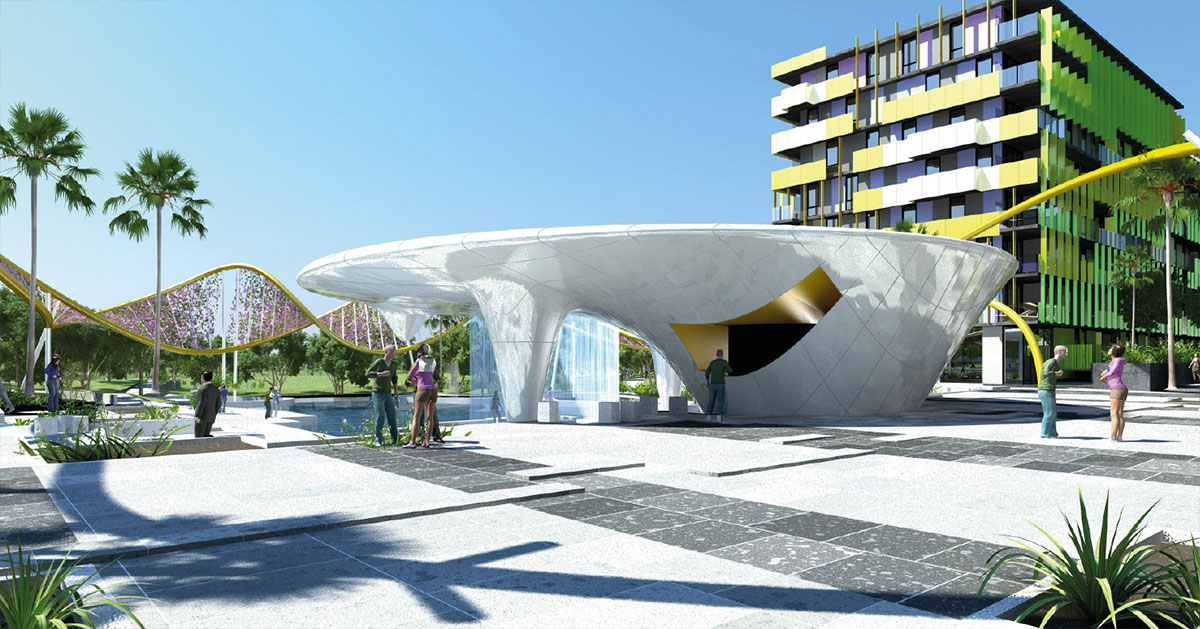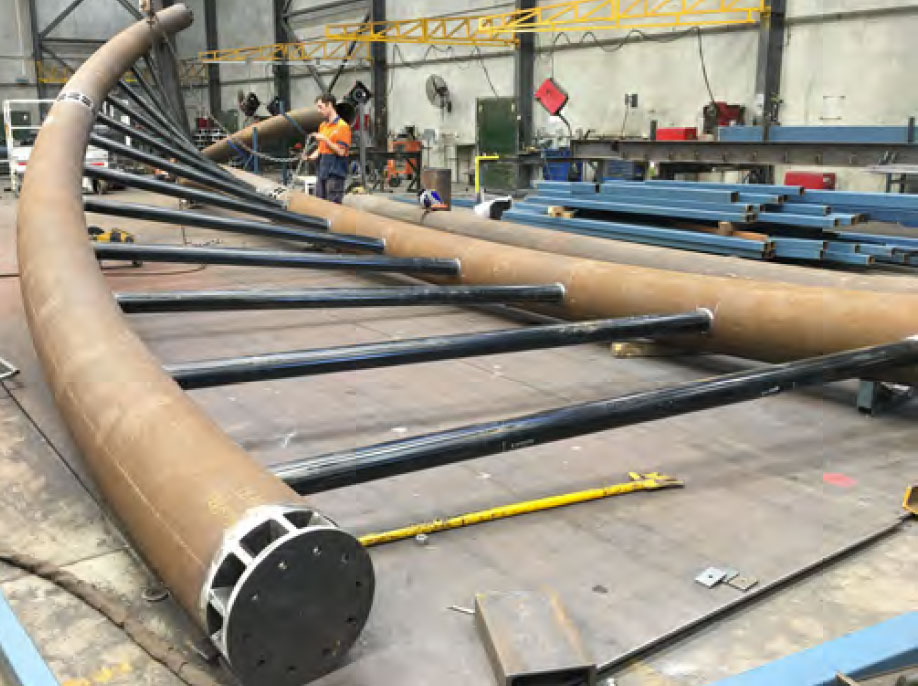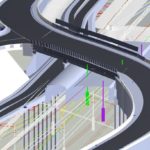Keeping ahead of the curve with Tekla
Even if the closest you’ve come to the former Gold Coast Commonwealth Games Athletes Village is on the drive in to the city, it’s not hard to catch a glimpse of one of the most eye-catching constructions of the 2018 Games.
It’s an arbour of snaking yellow steel with an unmistakable reference to the twisting strands of a DNA double helix at the heart to the village.
This was far from a run-of-the-mill project and one that showcases the use of technology – software and hardware – at its finest.
With no two parts the same, the in-house drafting team had the complex task of turning the design drawings into something that could be manufactured and erected, as well as communicated easily to the team on the workshop floor.
Watkin Steel’s outstanding work and use of Tekla was recognised when the project won the sport and recreational category of the Australian Tekla BIM Awards in 2018.
Using 3D laser scanning technology, Watkins Steel scanned the as-built site for 100% accurate measurement and clash detection.
“After overlaying the 3D design model into the 3D point cloud model registered from the scan, we discovered that the adjacent building scaffold encroached on the site and clashed with the arbour,” Watkins Steel’s Andy Irwin said.
“However, because this problem was discovered before installation, we were able to re-adjust the construction program, containing overall project costs and instilling client confidence.”
Using Tekla Structures for detailing, the team was able to efficiently go from design drawings to manufacture and erection. What’s more, the team easily communicated and collaborated in the workshop.
“Tekla can interface with our Voortman CNC Machinery, which allows a seamlessly integrated process from the detailer’s console straight to the workshop cutting equipment,” said Andy.
“The workshop crew cut out the handling of the large and awkward shapes by running them through an ‘infinite production line’. This maximized productivity while reducing the hazard of crane lifts and objects moving overhead.
“This method also meant the pieces were being trial fit as they were assembled, then taken straight to the back of the truck to the painter’s yard.”
The use of a 3D laser scanner proved an invaluable Quality Assurance (QA) tool. It allowed the crew to scan each piece after it was assembled so the detailer could overlay a virtual scale model of the assembled piece into the Tekla model.
If any errors appeared, they were still well within control to repair or adjust with minimal hassle.
The rolling of the large pipe sections was undertaken by the company Inductabend from Melbourne. “We carried out QA by scanning the sections immediately after rolling,” Andy said.
“Once scanned, we overlaid the 3D point cloud into the Tekla model and adjusted the model to suit the members, rather than adjusting the steel members to perfectly suit the existing design model.”
Installation of the arbour was staged to coincide with the removal of the adjacent building scaffold. Set-out for installation was carried out in tandem with a 3D laser scanner and Trimble Robotic Total Station.
Using the scanner, they were able to scan the HD bolts after installation, then overlay it into the Tekla model. This allowed them to alter the length of the columns, orientation of the base plate, and the holes within the base plate w
here necessary.
The Robotic Total Station was then paired with the scanner to provide a measure, a check and a subsequent layout for final installation. This ensured the arbour fit together flawlessly the first time.
A project as intricate as this brought with it challenges and the distinct possibilities of problems along the way. But thanks to Watkins use of Tekla, married with Trimble hardware to produce 3D scans, such margins of error were eliminated, meaning this amazing structure came to fruition right the first time.






